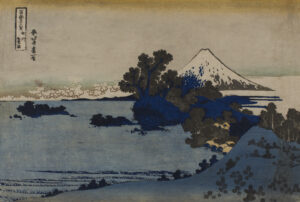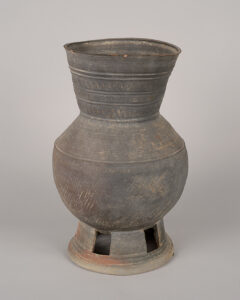Asian Collection
Ceramics, sculpture, and works on paper from China, Korea, Japan, India, and Southeast Asia from the 3rd century BCE to the 20th century CE
Ceramics are the strength of the Palmer Museum of Art’s Asian collection. Ranging in date from the third century BCE to the nineteenth century, the collection includes representative pots, dishes, and sculpture made in China, Japan, Korea, and Cambodia, and a significant group of porcelains made in China for export to western markets, particularly to England and America. Among the Asian ceramic collection are cooking vessels, vases, and other utilitarian wares, as well as a group of animal and figural sculptures excavated from tombs constructed in China during the Tang period (618–907 CE). Jade sculptures and various objects of everyday use carved in nineteenth-century China represent an important component of the Asian collection. Stone sculptures from Hindu temples in India and a Buddhist temple built during the Khmer period in Thailand represent two of the major sculptural traditions of South and Southeast Asia. Other works in the collection include a small group of Chinese and Japanese paintings and drawings.
Japanese woodblock prints constitute a second area of strength, with numerous examples of prints in styles and movements from the seventeenth to the twentieth centuries, including the medium’s leading artists such as Kitagawa Utamaro, Katsushika Hokusai, Utagawa Kunisada, and Ando Hiroshige.











